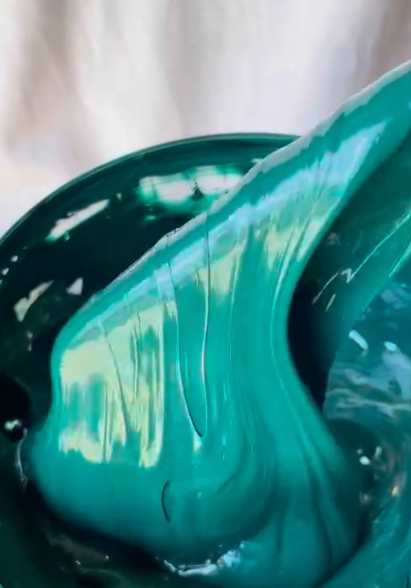O mercado en crecemento para a tinta plastisol ecolóxica!
Ola a todos! Hoxe imos falar sobre tinta plastisol ecolóxicaEste tipo de tinta está a facerse cada vez máis popular! Porque todo o mundo quere cousas que sexan mellores para o medio ambiente.
Que é a tinta Plastisol?
Tinta plastisol é un tipo de tinta usado para impresiónVén en moitas cores e pódese imprimir na roupa. Pero, máis antigos tintas plastisol tiñan algunhas cousas malas neles. Agora, con tinta plastisol ecolóxica, é moito mellor!
- Non ten produtos químicos nocivos.
- É mellor para a Terra.
- Tamén é máis seguro de usar.

Por que a tinta plastisol ecolóxica se está a volver máis popular?
Hai varias razóns:
- A xente quere produtos ecolóxicos: Moita xente quere mercar cousas que sexan boas para o medio ambiente. Entón, roupa estampada con tinta ecolóxica son máis populares.
- As empresas queren ser ecolóxicas: Moitas grandes empresas queren ser máis respectuosas co medio ambiente. Usando tinta ecolóxica pode axudalos.
- Requisitos legais: Algúns lugares teñen leis que esixen o uso de ecolóxico materiais. Entón, usando tinta ecolóxica tamén é imprescindible.
Que novos cambios están a ocorrer no mercado?
- Novos materiais: Algunhas empresas están a comezar a usar novos materiais para fabricar tintaEstes materiais proceden de plantas e son máis respectuosos co medio ambiente.
- Reciclaxe: Algunhas empresas están a comezar a recoller artigos usados tinta e convertelo en novo tintaDeste xeito, non se desperdicia nada.
- Competencia da impresión dixital: A impresión dixital tamén está mellorando. Pero, plastisol ecolóxico aínda é moi útil nalgunhas zonas.
- Máis certificacións: Agora hai moitas certificacións que demostran tinta é ecolóxico.
Que oportunidades hai?
- Mercado asiático: Asia ten moitas fábricas téxtiles e necesitan tinta ecolóxica.
- Usos especiais: Tinta ecolóxica pódese usar en roupa deportiva e subministracións médicas.
- Colaboración: As empresas poden colaborar con organizacións ambientais para investigar novas tinta.
- Informar á xente: As empresas teñen que dicirlle á xente que os seus tinta é ecolóxicoDeste xeito, a xente quererá compralo.
Que problemas hai?
- Preocupacións pola calidade: Algunhas persoas preocúpanse de que tinta ecolóxica non é tan bo como o antigo tinta.
- Preocupacións polos prezos: Tinta ecolóxica pode ser un pouco máis caro.
- Diferentes leis: Diferentes lugares teñen diferentes requisitos para tinta ecolóxica.
- Produtos ecolóxicos falsos: Algunhas empresas poderían dicir que as súas tinta é ecolóxico, pero non é realmente certo.
Que acontecerá no futuro?
O mercado para tinta ecolóxica seguirá crecendo. Para o ano 2030, é probable que moitas empresas estean a usar tinta ecolóxica.
- A tecnoloxía mellorará: Tinta será mellor de usar e máis respectuoso co medio ambiente.
- As políticas cambiarán: Pode haber máis leis que obriguen a todo o mundo a usar tinta ecolóxica.
Resumo
O mercado para tinta plastisol ecolóxica está a medrar. Porque todo o mundo quere cousas que sexan mellores para o medio ambiente. Se comezas a usar tinta ecolóxica Agora, podes facelo mellor no futuro! Se queres saber máis, fai clic aquí para aprender máis sobre tinta plastisol ecolóxicaMáis información sobre os beneficios das tintas ecolóxicasQueres ver a nosa colección de tinta ecolóxica?
Preguntas frecuentes
- É tinta plastisol ecolóxica tan bo como o vello tinta?
- Que industrias empregan tinta ecolóxica o máis?
- Como poden permitirse as pequenas empresas usar tinta ecolóxica?

Táboa de datos
| Elemento | Datos/Conclusións | Fonte | Importancia |
|---|---|---|---|
| Tamaño do mercado en 2023 | $1.200 millóns | Investigación de Grand View [^1] | Liña de base para a análise do potencial de crecemento |
| Tasa de crecemento anual composta (TCAC) proxectada (2023–2030) | 9.8% | Statista | Indica unha rápida adopción en téxtiles/envases |
| Impulsor clave do crecemento | 68% das marcas agora priorizan materiais de embalaxe sostibles | McKinsey & Company (enquisa de 2024) | Ligazóns aos compromisos ESG corporativos |
| Impacto regulatorio | O REACH da UE prohibe 12 substancias químicas no plastisol (o que afecta a 38% das formulacións tradicionais) | Axencia Europea de Substancias Químicas (ECHA) [^2] | Forza a reformulación da industria |
| Comparación de custos | O ecoplastisol custa 15-20% máis, pero reduce os gastos de tratamento de augas residuais en 30% | Estudo de caso: proxecto piloto de Sun Chemical para 2024 | Aborda as preocupacións sobre o retorno do investimento (ROI) para as empresas |
| Mercado rexional principal | Asia-Pacífico ten unha cota de mercado de 42% (impulsada polas exportacións téxtiles da India) | Grupo IMARC (2025) | Guía as estratexias de expansión xeográfica |
| Foco na innovación | O plastificante de base biolóxica de BASF reduce as emisións de COV en 90% | Informe de sustentabilidade de BASF 2024 [^3] | Demostra a viabilidade tecnolóxica |
| Sentimento do consumidor | 74% dos compradores da xeración Z pagan unha prima pola roupa con etiqueta ecolóxica | Enquisa de sustentabilidade global de NielsenIQ (2025) | Valida a demanda do mercado |
| Estudo de caso: Patagonia | Redución das emisións da cadea de subministración en 18% ao cambiar a plastisol libre de ftalatos | Informe de impacto da Patagonia 2024 | Demostra escalabilidade para marcas |
| Eficiencia da reciclaxe | Os novos sistemas de circuíto pechado recuperan 85% de tinta residual (en comparación coas 45% dos métodos tradicionais) | Piloto da Fundación Ellen MacArthur con Siegwerk Inks | Destaca as oportunidades da economía circular |
| Taxa de adopción das pemes | Só 22% de impresoras pequenas usan ecoplastisol debido aos altos custos iniciais. | Censo mundial de impresión da FESPA (2024) | Identifica o segmento de mercado desatendido |
| Impacto das tecnoloxías emerxentes | As tintas formuladas con IA reducen o tempo de I+D en 40% (DIC Corporation, 2025) | Nota de prensa da Corporación DIC | Revela ganancias de eficiencia no desenvolvemento de produtos |
Espero que este artigo che sexa útil!



